Ta-a mi
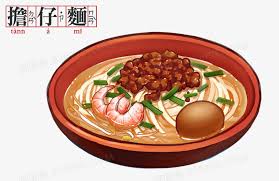
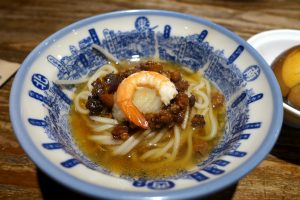
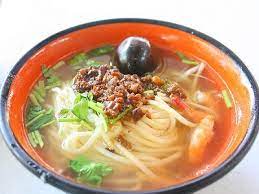
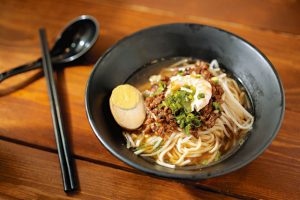
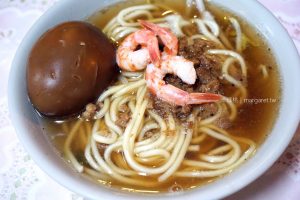
Origin
Ta-a noodles are said to originate in the late Qing dynasty, around 1895.[4] During the Tomb Sweeping Festival and summer season (July to September) each year in Taiwan, there are frequent typhoons, rendering fishing too dangerous. These “slack seasons” were known to fishermen as “small months” (Chinese: 小月; Pe̍h-ōe-jī: sió-go̍eh) and the phrase “pass the small months” (度小月; tō͘-sió-go̍eh) refers to enduring the slack seasons.
Hong Yutou (洪芋頭), a fisherman from Tainan, and descending from fishermen in Zhangzhou, Fujian, began to sell noodles when he was 20 years old. At first it was to earn money during the off-seasons but eventually became his primary occupation. In the beginning, he carried his noodles on shoulder poles (擔; tàⁿ) and sold them on the street before setting up a small stall in front of the Tainan Chuisian Temple (水仙宮; Chuí-sian-kiong), with the Chinese characters (度小月擔仔麵; tō͘-sió-go̍eh tàⁿ-á-mī) written on lanterns. Hence the name “Slack Season Ta-a Noodles”.
Production methods
Ingredients: “oil noodles”, minced pork, prawn, bean sprouts, cilantro, black vinegar, garlic, soy sauce and egg.
Boil prawn heads to be used as the soup base
Boil noodles and bean sprouts in hot water, while shaking them up and down
Pick up noodles and bean sprouts, put bean sprouts on the bowl first and then put noodles on the bean sprouts in bowl. Topped with minced pork and prawn.
Add the prawn head soup, and then add some seasoning to your taste: typically black vinegar, garlic and cilantro.
Also can be topped with an egg or pork ball


